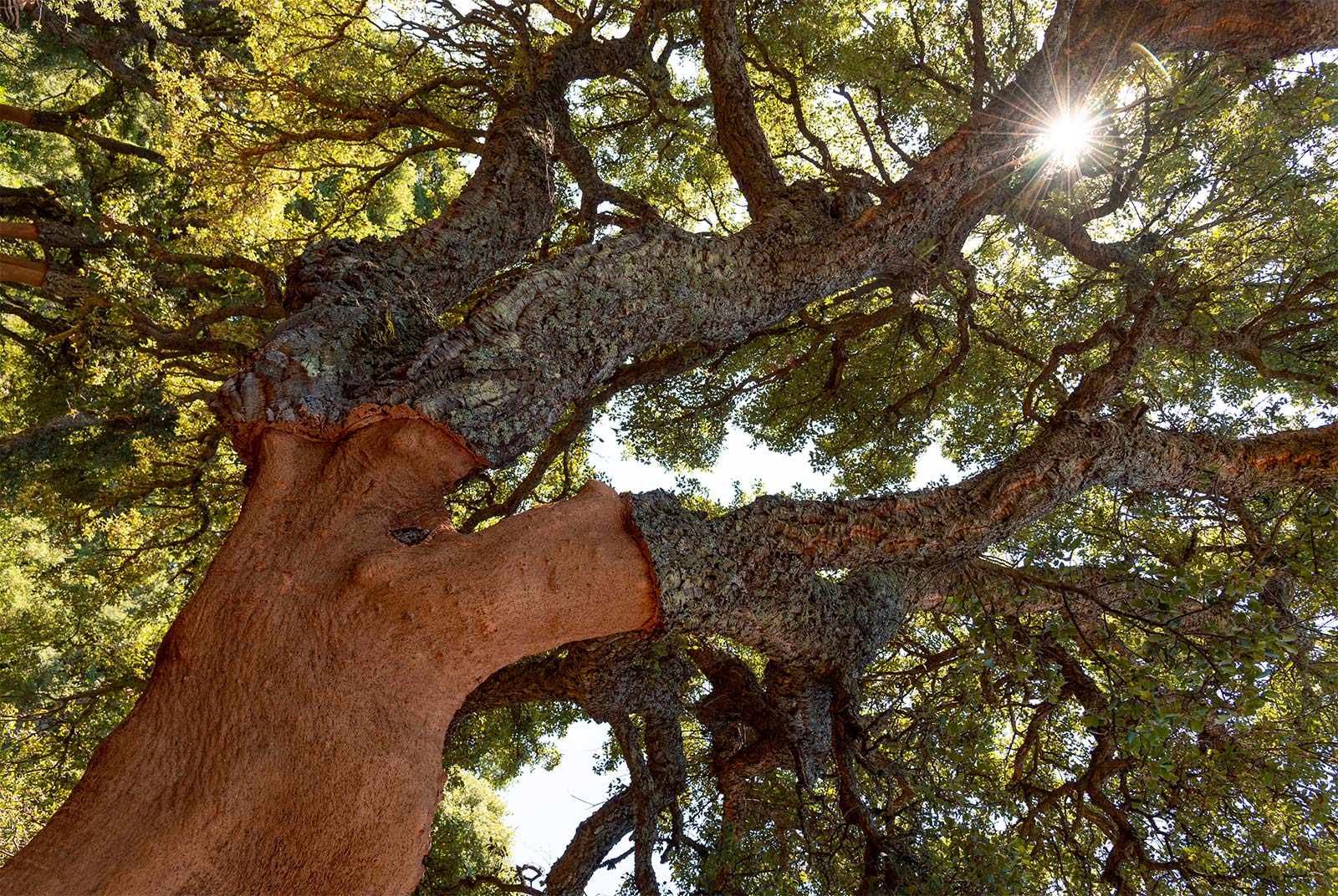The focus on sustainability and circularity fits perfectly into the production cycle of cork. This versatile material is widely used in construction and renovation due to its remarkable properties and performance.
Cork is the flagship material of our Diasen products. It stands out as a valuable material in the building industry, a zero-kilometre product, 100% Mediterranean and natural. Portugal is the world’s leading producer of this fantastic material, with over 70 million cork trees covering 730 thousand hectares of forest, constituting 8% of the territory and representing 34% of the world’s surface area.
Italy is also rich in cork oaks, particularly in Sardinia, an island that holds all the beauty and preciousness of these trees.
The cork ecosystem: cork oak groves
When one speaks of cork, one immediately thinks of wine bottle corks, but the truth is that its role in the industry does not stop there. Nobody, then, when talking about this material, thinks of where it comes from, of the hundreds of hectares of land occupied by tall, mighty oaks.
Cork oak forests are a biodiversity heritage, hosting numerous species of birds, mammals, reptiles and amphibians. Carbon dioxide levels drop considerably in these green areas, making the air pure and fresh.
Cork oaks in the western Mediterranean basin have the extraordinary capacity to use around 30.66 million tonnes of CO2 per year.
But that is not all. The cork oak plays a multifunctional role, preventing soil degradation, combating desertification and acting as a barrier against fires.
Gentle and respectful cork extraction
Cork is not obtained from the whole plant by felling it and taking the wood from it. The cork is enclosed in its bark. Therefore, there is no need to cut the trunk cleanly, risking deforestation. On the contrary, it goes through a process called decortication, a work that is still completely manual and highly specialised. It is repeated every nine years about 15-18 times.
The cork process continues with the drying and boiling phase, which not only allows the cork to obtain the consistency needed for processing, but also eliminates all bacteria and microorganisms within the bark. There are no other chemical treatments that respect the environment and the raw material. Once all production steps are completed, the cork is ready to enter various industries, including construction.
The uses of cork: not just corks
Cork, known for centuries for wine bottle corks, is also used in construction, particularly in the production of self-expanding and self-bonding flooring, cladding and insulation panels. This versatility makes it a highly circular material with a positive environmental impact.
Expanded cork, in particular, emerges as a material of excellence in terms of durability and thermal insulation. The production process, which does not require the use of adhesives or chemical additives, exploits the previously seasoned and selected bark, reduced to granules and distributed in metal blocks. The addition of water vapour at controlled temperatures leads to the expansion of the granule, increasing its volume by 30%, releasing waxy substances, suberin and lignin that act as natural glues.
Advantages of cork in green building
Its water resistance is a distinctive feature, making it ideal for applications where moisture removal is essential. Furthermore, cork’s unlimited durability promises unparalleled longevity, giving the material a significant advantage in the design of long-term building solutions.
Cork in green building maintains its structural characteristics over time, ensures consistency of performance and structural strength, and thus contributes to the solidity and reliability of building structures. Cork’s optimal insulating capacity, expressed through a declared lambda of 0.039, makes it an irreplaceable ally in building thermal insulation. This value represents the efficiency with which the material conducts heat, confirming expanded cork as a high-performance solution for ensuring thermal comfort in living spaces.
CO2 capture is a significant contribution to environmental sustainability made by cork. In addition to being a natural and recyclable material, its ability to trap carbon dioxide during its production and use process actively reduces the overall environmental impact.
Fire resistance, elasticity and compressive strength are further characteristics that highlight cork as a versatile and safe choice in the construction context. Its ability to keep the structure intact even under adverse conditions, such as during a fire, underlines the importance of this material in terms of safety and protection.
Cork in green building: Conclusions
The elegant combination of tradition and innovation is reflected in the entire cork industry, from the cultivation in the picturesque cork oak forests and true oases of biodiversity to the refined production of materials such as expanded cork, which connotes today’s building industry with superior performance.
As well as embodying technical excellence, this material guards a centuries-old history, keeping traditions and a commitment to environmental protection alive. Its versatility, highlighted in the creation of flooring, cladding, insulating panels, and insulating paints such as those by Diasen, confirms cork as an ally in creating elegant and comfortable spaces.
The revival of cork in green buildings affirms sustainability and recognizes a valuable ecosystem that extends from the heart of Mediterranean forests to the design of modern buildings.

